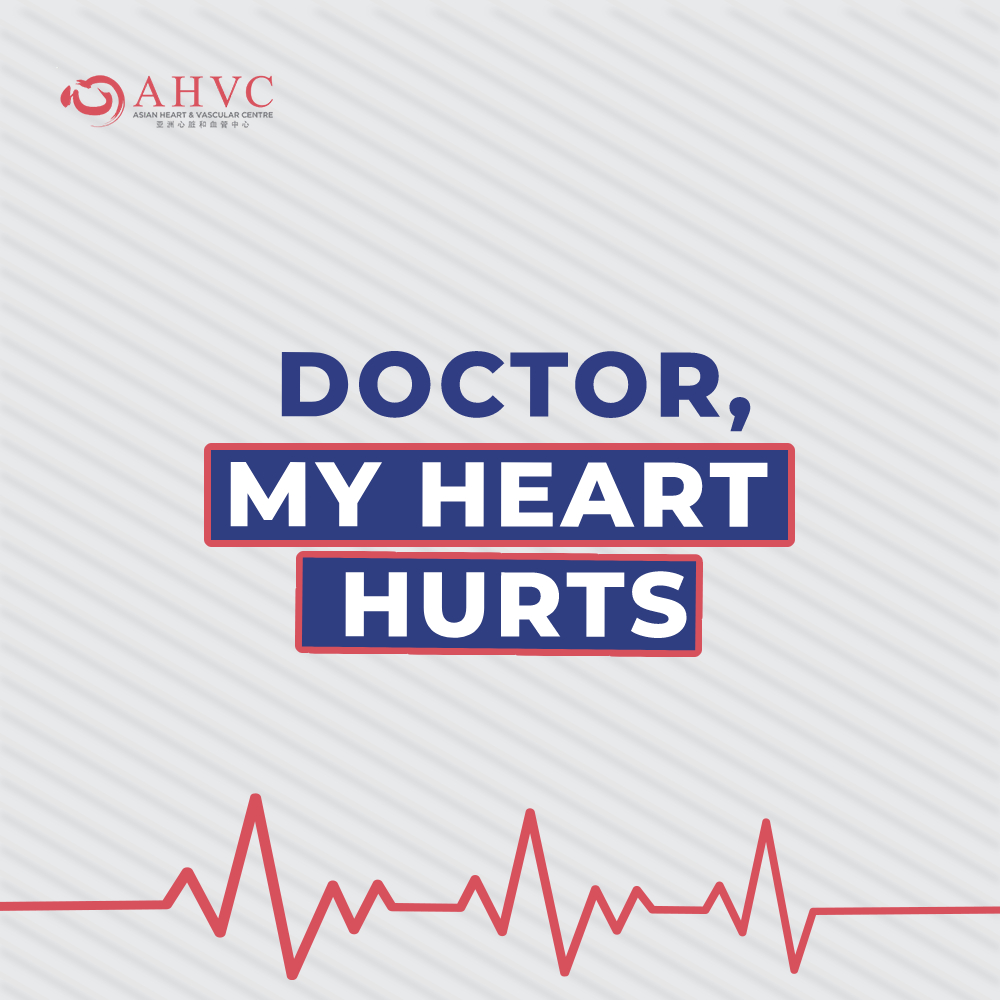This is a common symptom in any cardiology practice. Patients often come into the consultation room pointing to their chest and say that their hearts hurt. More so if the symptom is over the left side of the chest.
What they actually mean is that they have a pain over the chest. Fortunately, most of the time chest pain has nothing to do with their hearts. Within the chest area, there are many structures. These include, from outside in, skin, muscle, bone, joints of the ribs to the breastbone, membrane covering the lungs (pleura), membrane covering the heart (pericardium) and of course the heart. Any of these structures can cause pain. On top of that, the stomach which is situated behind the heart and slight below it, can suffer from gastritis or acid reflux which may be interpreted as chest pain.
During consultation, your doctor will spend some time trying to understand your chest pain. He will ask you exactly where the pain is. How large is the area where the pain is felt. What sets off the pain and what eases it. Whether the pain radiates to other parts of the body and if there are other symptoms occurring together with this pain. This is the most important part of the consultation when your doctor has to decide if the pain you are feeling is likely to be from your heart.
WHAT ARE THE MORE TYPICAL SYMPTOMS OF HEART PAIN?
The commonest cause for heart pain is ischaemic heart disease or coronary artery disease. This is where blood vessels supplying the heart with blood is/are narrowed to an extent that not enough blood is allowed to flow.
Usually, when the patient is at rest, he feels no pain. When he walks or climbs up some stairs, the heart has to beat harder and faster. This means the heart muscle needs more oxygen from the blood. If the artery is narrowed, the flow of the blood can not be increased. Just like any water tap. If the water pipe was choked, the flow of water out of the tap will be slowed. When the heart muscle cannot get sufficient blood but still has to work hard, it will start to cause pain.
The pain from lack of oxygen is typically in the center of the chest. This is where the heart is. The heart is not situated inside the left chest. The typical pain felt is often described as tight squeezing feeling. The more the patient walks or runs, the worse the pain.

